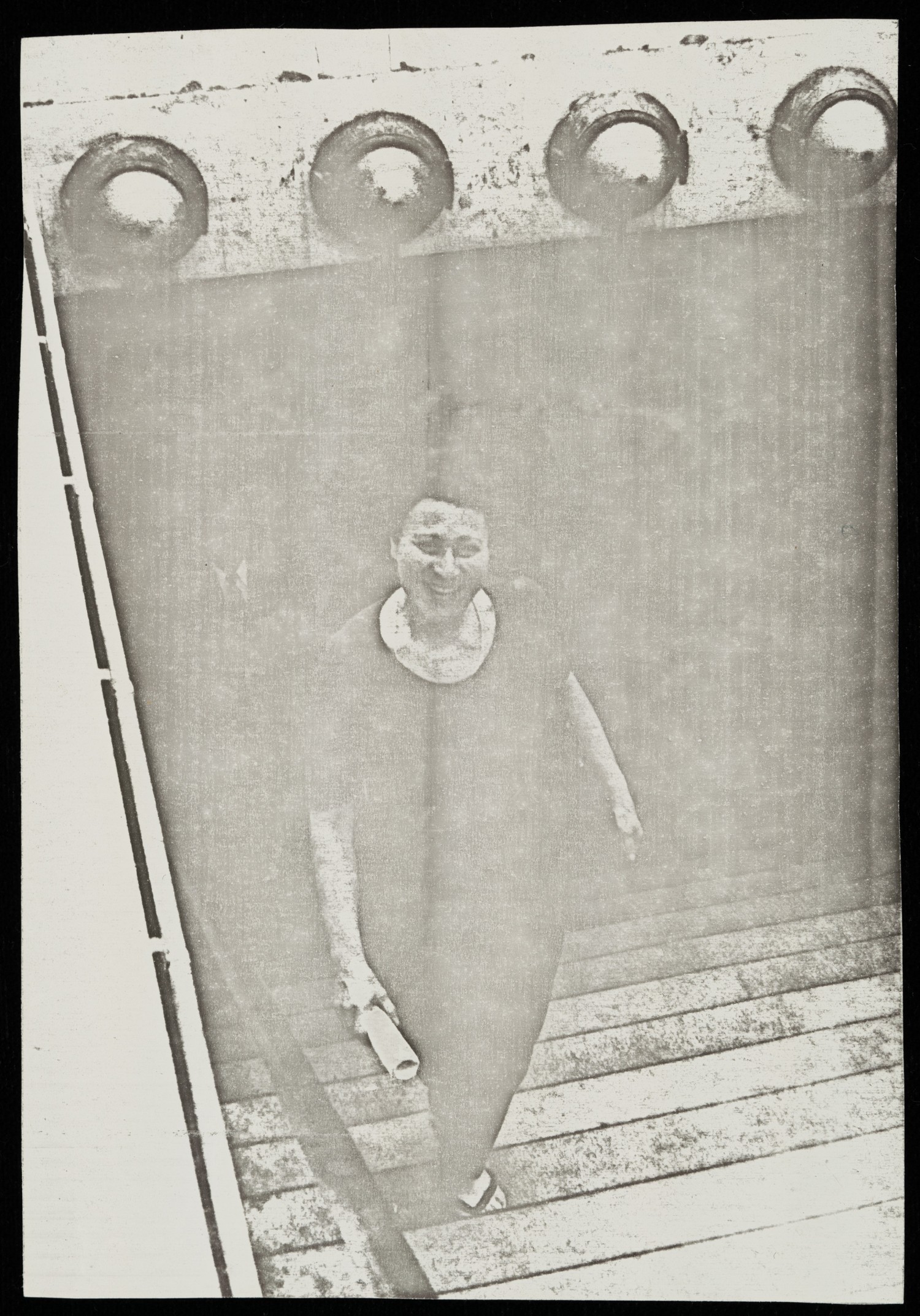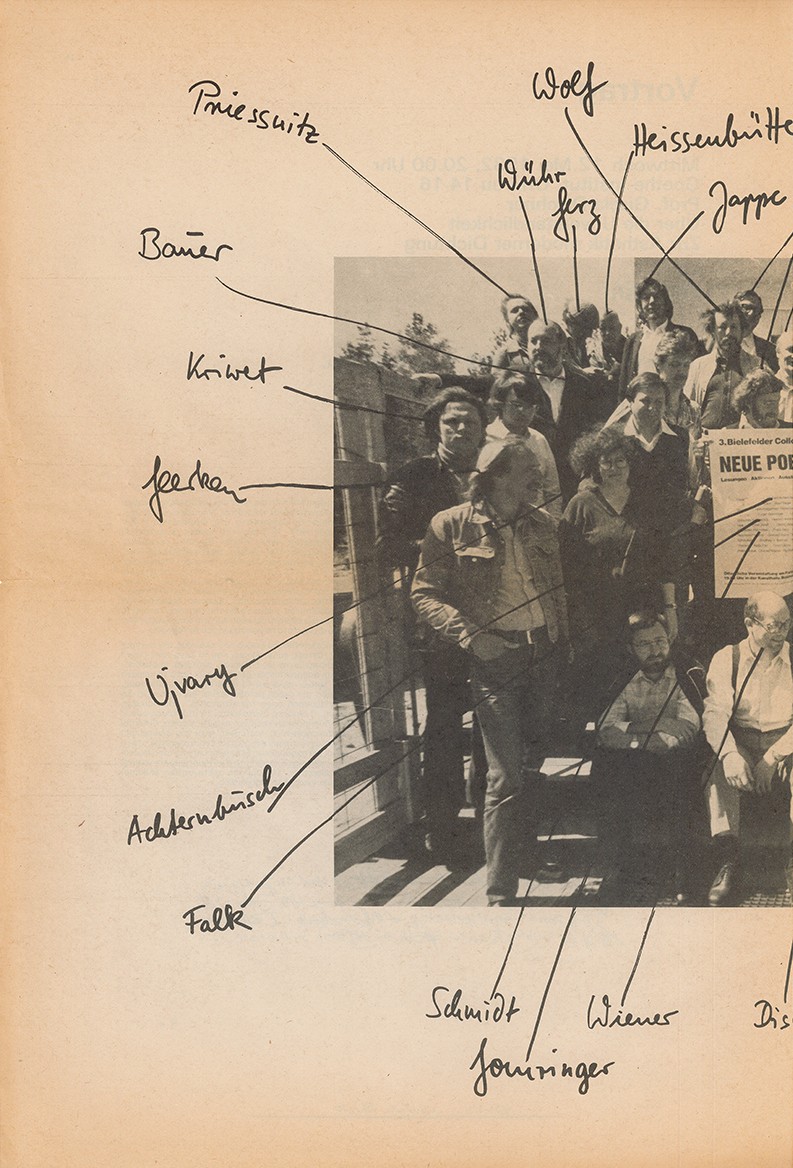






























biography




























Lily Greenham (1924, Vienna, AUT – 2001, London, GB) was born in Vienna, the only child of Rena Pfiffer-Lax and Dr. Gabriel Lax, both of Polish-Jewish descent from modern-day Ukraine. Her mother was a well-known soprano opera singer, performing and recording internationally, and later remarried the Danish singer Egon Madsen. Greenham’s parents both died as a result of flight and imprisonment by the National Socialist regime.
After the war Greenham (appearing as Lily Pfiffer-Madsen) and her step-father toured and performed together in Sweden, Norway, and Denmark, including a 1947 Danish radio broadcast where they performed pieces by Georges Bizet, Franz Lehár and Anton Rubinstein. In 1951, she married the poet Peter Greenham in London and subsequently returned to Austria to study at the Academy of Music and Performing Arts in Vienna. Here, Greenham developed a great interest in the Wiener Gruppe (Gerhard Rühm, H.C. Artmann) and became well known for radio broadcasts and performances of sound & concrete poetry by many writers, poets and artists, including Friedrich Achleitner, Elena Asins, Alain Arias-Misson, Ronaldo Azeredo, Bob Cobbing, Peter Greenham, Helmut Heißenbüttel, and Ernst Jandl. Greenham spoke several languages aside from her native German and adopted Danish, as evidenced in her BBC Radio 3 Sound Poetry Concert in 1970 where she delivered sound poems in their original Spanish, French and English.
In 1964, after separating from Peter Greenham, she moved to Paris where she joined the Groupe de Recherche d’Art Visuel (GRAV) of opto-kinetic artists. Greenham’s op art works became widely recognised and were shown in several major exhibitions, including Mouvement 2, Galerie Denise René, Paris, FR, 1964; The Responsive Eye, Museum of Modern Art (MoMA), New York, USA, 1965; Lumière et mouvement, Musée d’art moderne de la Ville de Paris (MAM), FR, 1967; Formas computables, Centro de cálculo de la Universidad de Madrid, (Computer Centre of the University of Madrid), ESP, 1969; and the 35th Venice Biennale in 1970. In 1972 Greenham settled in London and began to concentrate on her own compositions and sound work.
In 1973 she coined the term lingual music to describe her experiments with layering and processing reel-to-reel tape recordings of her own voice. In 1974 she realised Relativity at the BBC Radiophonic Workshop, which was broadcast on the BBC the following year, winning a prize for electro-acoustic music at the prestigious 5th Bourges International Festival of Experimental Music in 1975. That same year she worked with Hugh Davies at Goldsmiths, University of London, to create her (originally quadraphonic) piece Traffic.
Greenham performed live throughout the 1970s, including free improvisation performances with Danish saxophonist John Tchicai, the Bob Downes Open Music Trio, Hugh Davies and Peter Cusack. She also collaborated with a number of artist filmmakers including Lis Rhodes and Jo Davis, Ed and Irm Sommer, and Carola Klein, and in the 1980s she began a series of computer art works, using early graphics programs, collage and xerox. Into the 1990s Greenham continued to explore different possibilities for her work, finding a particular focus on writing which included the publication of Un Arte de Vivir (An Art of Living), originally published in the Spanish literary magazine Inventario, Edition 5, 1995. Lily Greenham died on 31 October 2001 in London, aged 77.
The Lily Greenham Archive is looked after at Special Collections, Goldsmiths, University of London.